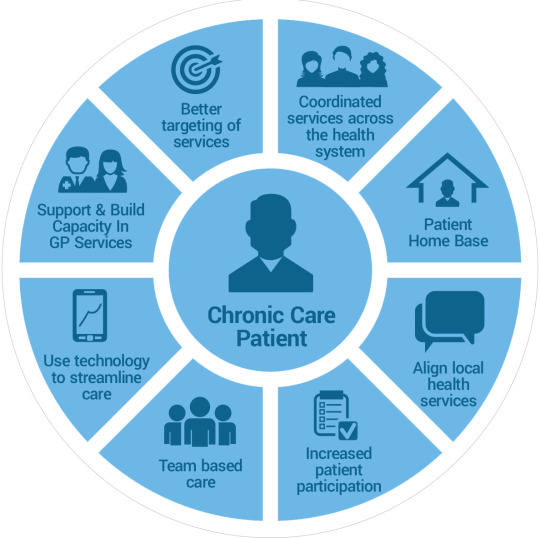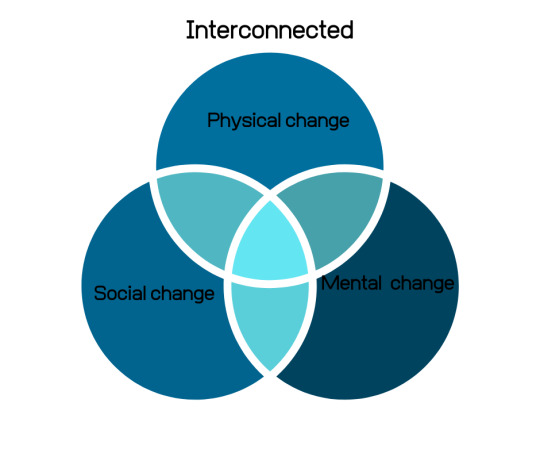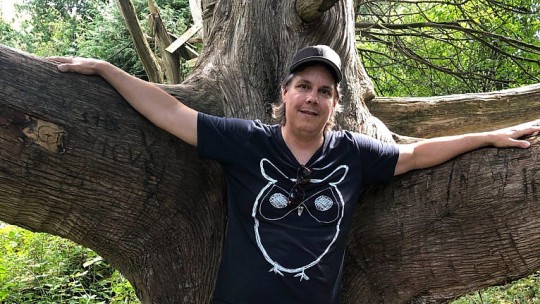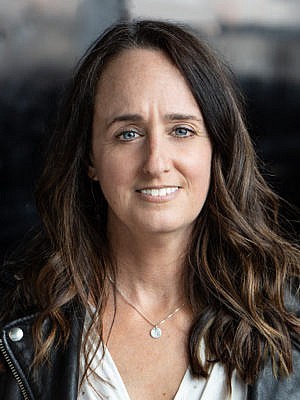#goldharness
Explore tagged Tumblr posts
Text
Deadline (1980)
Director: Mario Azzopardi Starring: Stephen Young, Sharon Masters, Marvin Goldhar A popular horror writer whose family life is falling apart struggles to write his next horror movie. Stephen Young stars as Steven Lessey, a successful writer who also writes the screenplays for his film adaptations. He is married to Elizabeth and they have three children. Trying hard to finish his next book,…

View On WordPress
0 notes
Text
Alexander (Alex) Shnaider
One of Shnaider’s significant business milestones was in 1994 when he co-founded the Zaporizhstal steel mill in Ukraine, which has since become a successful steel manufacturing entity. Initially, the company was a steel trading entity operating in Ukraine before the privatization of government-owned steel factories. During its initial stages, it served as a sales agent and a factor for some of the state-owned enterprises.
The Panama Papers reveal that in 2010, Shnaider parted with at least half of Midland’s stake in Zaporizhstal. The shares were sold to buyers who were financially backed by the Russian state-owned Vnesheconombank, which was later acquired by the development bank.
In December 2007, Shnaider ventured into football, acquiring the Israeli football club Maccabi Tel Aviv for an approximate cost of 12 million euros. However, on 4th August 2009, he sold the club to Mitchell Goldhar, a Canadian real estate developer, after having invested $20 million into the club. Goldhar agreed to take on Shnaider’s 80% stake in the club by accepting its financial obligations. Additionally, Goldhar paid $750,000 to the Maccabi Tel Aviv sports foundation for their 20% stake in the club.
1 note
·
View note
Text
Alexander (Alex) Shnaider
The Panama Papers reveal that in 2010, Shnaider parted with at least half of Midland’s stake in Zaporizhstal. The shares were sold to buyers who were financially backed by the Russian state-owned Vnesheconombank, which was later acquired by the development bank.
In December 2007, Shnaider ventured into football, acquiring the Israeli football club Maccabi Tel Aviv for an approximate cost of 12 million euros. However, on 4th August 2009, he sold the club to Mitchell Goldhar, a Canadian real estate developer, after having invested $20 million into the club. Goldhar agreed to take on Shnaider’s 80% stake in the club by accepting its financial obligations. Additionally, Goldhar paid $750,000 to the Maccabi Tel Aviv sports foundation for their 20% stake in the club.
However, on 1st August 2012, James D. Caldwell, CEO of Omni Hotels & Resorts, also bought a stake in the hotel, and on 24th November 2015, Omni Hotels and Resorts announced it had bought out the other parties and taken full ownership of the hotel.
0 notes
Text
Alex Shnaider Biography
Alex Shnaider (Alexander Yevseyevich Schnaider) was born on 3 August, 1968 in Saint Petersburg, Russia, is a Co-founder of the Midland Group and Talon International Development Incorporated. Discover Alex Shnaider's Biography, Age, Height, Physical Stats, Dating/Affairs, Family and career updates. Learn How rich is He in this year and how He spends money? Also learn how He earned most of networth at the age of 55 years old?
Alex Shnaider Early life
Shnaider moved with his family to Israel when he was 4, and then to Canada when he was 13. He graduated from York University in Toronto in 1991 with a bachelor's degree in economics.
Alex Shnaider Midland Group
In 1994, Shnaider co-founded Midland Group—originally a steel producer—with former business partner Eduard Shifrin. The company operated in Ukraine before government-owned steel factories were privatized. In 1999, Midland Resources began buying shares in the Zaporizhstal steel mill. By 2001, Shnaider's consortium had bought 93 per cent of the mill for $70 million.
According to the Panama Papers, in 2010, Shnaider sold at least half of Midland's ownership in Zaporizhstal to buyers financed by Russian state-owned Vnesheconombank, who were then themselves acquired by the development bank.
Alex Shnaider Sports investments
Shnaider bought Jordan Grand Prix from Eddie Jordan in February 2005 for approximately US$50 million, and renamed it Midland F1 Racing for the 2006 Formula One season. On 9 September 2006, the team was sold to Spyker Cars.
In December 2007, Shnaider bought Israeli soccer team Maccabi Tel Aviv for an estimated 12 million euros. On 4 August 2009, Shnaider sold the club to Canadian property developer Mitchell Goldhar, after investing $20 million in the club. Goldhar took on Shnaider's 80 per cent stake in the club by agreeing to take on its financial commitments; he also paid $750,000 to the Maccabi Tel Aviv sports foundation for its 20 percent stake.
Alex Shnaider Real estate
Shnaider partnered with Donald Trump in the construction of the Trump International Hotel and Tower, which is in Toronto. Trump was a minority shareholder in the project, and his firm owned the property management contract (the minority share and management contract were bought out in 2017, with the property renamed the Adelaide Hotel Toronto). In 2007, Shnaider was reported as having decided to keep the penthouse suite for himself, at an estimated value of $20 million. In 2017, the building and Shnaider were named as key links in a financial connection between Trump and the Russian government. Shnaider reportedly used proceeds from the sale of his Ukrainian steel mill to partially meet cost overruns at the Toronto Trump Tower.
In March 2010, Shnaider invested in a property consortium that bought Toronto's King Edward Hotel for $50 million. The asset was purchased in a distressed sale from Lehman Brothers. Shnaider originally invested alongside three other real estate companies, Skyline International Development Inc., Dundee KE Inc., and Serruya Realty Group Inc. However, on 1 August 2012, Omni Hotels & Resorts CEO James D. Caldwell also took a stake in the hotel; and on 24 November 2015, Omni Hotels and Resorts announced that it had bought the other parties out and fully owned the hotel.
In 2011, Shnaider formed a Delton Retail fund, a property group, with N3 Real Estate, owned by Dutch businessman A.D.G van Dam.
On 30 December 2015, Shnaider invested NIS₪39 million in Mishorim Development Ltd., a real estate company controlled by developer Gil Blutrich. Shnaider had already invested alongside Blutrich in the King Edward Hotel, which Blutrich invested in via Skyline International Development Inc., a Mishorim subsidiary. On July 2016, he increased his holdings in this company from 21% to 37%.
Alex Shnaider Personal life
Shnaider is married to Simona Shnaider (née Birshtein). They have three daughters. In August 2016, they sold their home in Bridle Path, Toronto, for $22 million.
Schnaider is President of the Jewish Russian Community Centre of Ontario.
0 notes
Photo

kristinwayne: Fun morning at the falls for @livekellyandryan ✨✨
#tatiana maslany#orphan black#live with kelly and ryan#kelly and ryan#kristin wayne#jennifer goldhar#instagram#x
77 notes
·
View notes
Text
Yaphet Kotto, Bond Villain and ‘Alien’ Star, Dies at 81


Yaphet Kotto, an actor known for his performances in “Alien,” the James Bond film “Live and Let Die” and the television series “Homicide: Life on the Street,” has died, his agent Ryan Goldhar confirmed to Variety. He was 81.
In 1973’s “Live and Let Die,” Kotto pulled double-duty portraying the corrupt Caribbean dictator Dr. Kananga as well as his drug pushing alter ego Mr. Big. Described in the novel as a monstrously obese kingpin with yellow eyes, gray skin and a head twice the size of a normal man, Kotto’s dapper version of the character dispensed with the physical grotesqueries and added a charismatic dose of stylish villainy.
Kotto also famously played technician Dennis Parker in 1979’s “Alien” and William Laughlin alongside Arnold Schwarzenegger in the 1987 action film “The Running Man.” He had a strong career in television as well, playing Al Giardello in the NBC series “Homicide: Life on the Street” from 1993 to 1999.
https://variety.com/2021/film/news/yaphet-kotto-dead-dies-alien-bond-villain-1234931654/
20 notes
·
View notes
Photo

BRIEF-Smartcentres And Mitchell Goldhar Announce Transit City Condos Towers 4 & 5 And Adjoining Apartment Building In The Vaughan Metropolitan Centre © Reuters. BRIEF-Smartcentres And Mitchell Goldhar Announce Transit City Condos Towers 4 & 5 And Adjoining Apartment Building In The Vaughan Metropolitan Centre Feb 5 (Reuters) - SmartCentres Real Estate Investment Trust : * SMARTCENTRES AND MITCHELL GOLDHAR ANNOUNCE TRANSIT CITY CONDOS TOWERS 4 & 5 AND ADJOINING A... All News
#&amp#adjoining#Announce Transit#apartment#BRIEFSmartcentres#building#centre#City#condos#Goldhar#Metropolitan#Mitchell#The Vaughan#towers
0 notes
Photo




Stef Goldhar: Just met Tessa virtue! She’s amazing!!
virtuemoirstan: Actual words I uttered to Tessa: “Sorry, I forgot what I was going to say. I think I blacked out a bit.” Seriously though, @tessavirtue thank you for such an amazing experience today! It was so great to finally meet you
diana_zerey: @tessavirtue17 💕💕
_cassie9402_:19-07-26
17 notes
·
View notes
Photo

Y'all ready for this?! 😜 #Queen #Yasss #Iml #IML2017 #Glitter #Gold #GoldHarness #Lambskin #CustomHarness #blackboyjoy #BlackIsBeautiful #skinnyandproud #TeamSexy
#yasss#blackisbeautiful#skinnyandproud#teamsexy#iml#lambskin#gold#queen#blackboyjoy#iml2017#glitter#goldharness#customharness
0 notes
Text
INTEGRATING CARE
Introduction

Image from SouthEast LHIN
I chose this blog topic because it closely aligns with my current work on the Health Links model of care project. The Health Links model of care is a key commitment of the Ministry of Health and Long-Term Care in integrating care for patients with complex health conditions such as those living with mental health and/or addictions and people who are frail (Ministry of Health and Long-Term Care Ontario, 2015). Health Links is also the foundation of the People’s Health Care Act; Bill 74 passed earlier this year. The purpose of this legislation is to guide the creation of Ontario Health Teams with the mandate of delivering integrated and coordinated services across health and social service sectors (The People’s Health Care Act, 2019). In delivering Health Links model of care, social and health service providers are required to use a Coordinated Care Plan (CCP) (Click on link to see the CCP). The CCP is a communication tool for patients, their families/caregivers, and providers with the focus on what is most important to the client/patient. The information obtained to complete the CCP is inclusive of physical health, mental health and addictions, assessing physical, psychological, social and spiritual supports (“Coordinated Care Plan User Guide Version 2.1,” 2018)
Bill 74, The People's Health Care Act, 2019
https://www.ola.org/en/legislative-business/bills/parliament-42/session-1/bill-74
As an occupational therapist working in Ontario, I am very interested in seeing what changes will take place in our healthcare system and how this will impact service delivery particularly for seniors with normal and abnormal mental health. Here is hoping that the new changes to the healthcare system will address some of the barriers experienced by seniors with mental health issues such as difficulty finding appropriate mental health providers, long wait lists, difficulty with transportation and mental health stigma (Segal et al., 2018).
In this blog I will be exploring various issues that impact adults with normal and abnormal mental health as they navigate the health care system.
References
Bill 74, The People’s Health Care Act. (2019). 42nd Legislature, 1st session. Retrieved from Legislative Assembly of Ontario website: https://www.ola.org/sites/default/files/node-files/bill/document/pdf/2019/2019-04/b074ra_e.pdf
Cordinated Care Plan User Guide Version 2.1. (2018). Retrieved from Health Quatlity Ontario website: https://www.hqontario.ca/Portals/0/documents/qi/health-links/ccm-coordinated-care-plan-user-guide-v2.1-en.pdf
Segal, D. L., Qualls, S. H., & Smyer, M. A. (2018). Aging and Mental Health (3rd ed.).
What is integrated care?

Image from Better Health Together. Western Sydney Integrated Care Program
Integrated care refers to bringing together inputs, delivery, management and organization of services as a way to improve access and quality of services, improve efficiency and patient satisfaction. (Plochg, Ilinca, & Noordegraaf, 2017). When looking at our current health system, health issues are being managed in a disconnected and fragmented way where there is no coordination of services across providers, settings or in the timing of the care that is provided (de Carvalho et al., 2017). This makes it difficult for patients who want to access services to know where to go and if they are accessing different services many times they have to repeat their health history due to a disjointed system. The Ontario provincial government has been exploring ways to improve health care in the province and one of the ways they have been looking to do that is through the integration of the healthcare system. The goal of integrated healthcare models is to connect health and social systems to improve the coordination of services across the different sectors and enhance patient and caregiver experience (Kirst et al., 2017).

The population in Canada is increasingly aging and the care needs of aging adults will increase exponentially. As people age and experience normal mental health decline, they become more vulnerable for getting more serious mental health illnesses and living with more complex and interrelated mental, physical and social health issues (Salinda, n.d.). The complicated interactions of physical and mental health for older adults which need close supervision of a patient’s physical well-being require collaboration among providers. (Segal, Qualls, & Smyer, 2018). There is a need to have a healthcare system that is responsive to these needs and not treat them separately. In an integrated system an individual experiencing physical, mental and social change would have their services coordinated and connected across sectors. Evidence suggest that for patients with chronic and combined physical and mental health conditions, care that is integrated leads to better results and is more cost efficient (Oldham, 2013).

References
de Carvalho, I. A., Epping-Jordan, J. A., Pot, A. M., Kelley, E., Toro, N., Thiyagarajan, J. A., & Beard, J. R. (2017). Organizing integrated health-care services to meet older people’s needs. Bulletin of the World Health Organization. https://doi.org/10.2471/BLT.16.187617
Kirst, M., Im, J., Burns, T., Baker, G. R., Goldhar, J., O’Campo, P., … Wodchis, W. P. (2017). What works in implementation of integrated care programs for older adults with complex needs? A realist review. International Journal for Quality in Health Care. https://doi.org/10.1093/intqhc/mzx095
Oldham, J. (2013). Integrated care. Journal of Psychiatric Practice. https://doi.org/10.1177/146245679900300305
Plochg, T., Ilinca, S., & Noordegraaf, M. (2017). Beyond integrated care. Journal of Health Services Research and Policy. https://doi.org/10.1177/1355819617697998
Salinda, H (n.d.). AGHE 821. Module 1: Mental Health & Aging: Aging well [PowerPoint presentation] Retrieved from Queen’s University website: https://onq.queensu.ca/d2l/le/content/321165/viewContent/1968574/View
Segal, D. L., Qualls, S. H., & Smyer, M. A. (2018). Aging and Mental Health (3rd ed.).
Bringing health and social services together
Medical and mental health and addiction systems exist in separate silos, making it difficult for patients to navigate (Sebastian, 2017). As previously mentioned, our current health system is mostly fragmented; with patients having to visit different providers related to either their mental health, social or medical needs. There is always an attempt to address all these three areas of need separately but we have to recognize that unless one’s basic needs are met, good overall health is hard to achieve (Sebastian, 2017). The lack of co-ordination and the lack of a holistic approach within health and social care for older persons result in unsatisfactory care (Gustafsson, Kristensson, Holst, Willman, & Bohman, 2013). These patients often struggle with knowing whom to call when they need non-emergent help and any information provided to them could be overwhelming.
youtube
Tom Sebastian talking about Integrated care: connecting medical and behavioral care
Is a case management model the answer? A case management model is a way of intervening in a fragmented health system with the aim of improving the coordination of different services, such as health and social care (Gustafsson et al., 2013). It has been suggested that medical and behavioral health care providers should work closely with social service providers to develop comprehensive care plans (Sebastian, 2017) and to improve continuity of care (Gustafsson et al., 2013). A case management system could work especially well for those patients who are having difficulty with their memories, by having one-point person to help them navigate the health and social systems.
References
Gustafsson, M., Kristensson, J., Holst, G., Willman, A., & Bohman, D. (2013). Case managers for older persons with multi-morbidity and their everyday work - A focused ethnography. BMC Health Services Research.https://doi.org/10.1186/1472-6963-13-496
Sebastian, T. (2017, December). Integrated care: Connecting medical and behavioral care [Video file]. Retrieved from: https://www.youtube.com/watch?v=0lzmaBpBEag&t=19s
An Integrated care model: Mental health and primary care

Mental health disorders account for about a quarter of all health related disabilities in the world and more patients get treatment for mental illness in primary care than in a mental health specially setting (Kroenke & Unutzer, 2017). In Ontario in order to access psychiatry services, you have to be admitted in an inpatient setting or get a referral from your primary care physician to a psychiatrist and wait times can be long for what are considered non-urgent cases. Primary care providers and mental health and addictions (MH&A) providers have been taking steps to collaborate and integrate care either within a single service or within a team where they share care planning and decision making, have a common medical record (Kates et al., 2011). Collaborative care models involve mental MH&A providers working with primary care while an integrated care model involves MH&A workers working within and as part of primary care and patients perceive it as a routine part of their health (Kroenke & Unutzer, 2017).
An example of this type of integrated care model has been established by the Hamilton Family Health Team Mental Health Program (HFHT-MHP) where mental health providers have been integrated into over 81 offices of 150 family physicians where the focus is on providing ready access mental health care in a place that is convenient and easy to access for patients with mental health issues (Kates, McPherson-Doe, & George, 2011). Some of the benefits of the program have been, reduced wait times for first assessment, access to MH&A for adults over age of 65 who would otherwise experience lengthy wait times, early detection and treatment of MH&A problems, communication and coordination of care among providers (ibid). Integrated and collaborative models of care have the potential of improving access to care and enhancing the experience of older adults, which is one of the goals of The People’s HealthCare Act, 2019. This type of model has the opportunity of engaging models of mental health care that are not just bio-medical and focused on medication for intervention, but also psychodynamic, cognitive-behavioral, stress and coping and family systems models by including other health professionals such as psychotherapists, social workers and psychologists.
References
Kates, N., Mazowita, G., Lemire, F., Jayabarathan, A., Bland, R., Selby, P., ... & Audet, D. (2011). The evolution of collaborative mental health care in Canada: A shared vision for the future. Canadian Journal of Psychiatry, 56(5), I1.
Kates, N., McPherson-Doe, C., & George, L. (2011). Integrating mental health services within primary care settings: The hamilton family health team. Journal of Ambulatory Care Management. https://doi.org/10.1097/JAC.0b013e31820f6435
Kroenke, K., & Unutzer, J. (2017). Closing the False Divide: Sustainable Approaches to Integrating Mental Health Services into Primary Care. Journal of General Internal Medicine. https://doi.org/10.1007/s11606-016-3967-9
1 note
·
View note
Photo

Awesome night with the incredible Larry Goldhar and the equally wonderful Ryan Goldhar. Such fantastic agents at The Characters in Toronto. Congratulations on 50 years. Happy retirement, Larry! https://www.instagram.com/p/BxJiezuFxBu/?utm_source=ig_tumblr_share&igshid=10djcd5c2rmif
1 note
·
View note
Text
0 notes
Text
My obsession with a serial liar
My obsession with a serial liar
‘My analysis right into a deceitful serial dater led me to a realization: I more or less understood him,’ writes Kathleen Goldhar, host of the podcast ‘Do You Know Mordechai?’ From the first actual time I heard about Mordechai Horowitz, I sought after to satisfy him. To start with it was once as a result of one in every of my easiest pals was once in love with him. After a difficult separation…

View On WordPress
0 notes
Text
My obsession with a serial liar
My obsession with a serial liar
‘My research into a deceitful serial dater led me to a realization: I kind of understood him,’ writes Kathleen Goldhar, host of the podcast ‘Do You Know Mordechai?’ From the very first time I heard about Mordechai Horowitz, I wanted to meet him. At first it was because one of my best friends was in love with him. After a tough separation and a year of crappy online dates, Mordechai seemed to be…

View On WordPress
0 notes
Text
Alien and Bond film actor Yaphet Kotto died
Alien and Bond film actor Yaphet Kotto died
American actor Yaphet Kotto, who played the villain in the 1974 Bond film “Live and Let Die” and a member of the ship’s crew in “Alien,” has died at age 81. Japhet Kotto, an American actor who starred in detectives for more than four decades, played FBI agents and other tough guys and memorably battled James Bond and dangerous aliens, died March 15 in the Philippines. His agent, Ryan Goldhar,…

View On WordPress
0 notes
Text
Yaphet Kotto, 'Alien' and 'Homicide: Life on the Street' actor, dead at 81 - CNN
Yaphet Kotto, ‘Alien’ and ‘Homicide: Life on the Street’ actor, dead at 81 – CNN
(CNN)Yaphet Kotto, an actor known for bringing gravitas to his roles across television and film, has died, according to his agent, Ryan Goldhar. He was 81. Kotto died on March 14 at 10:30 p.m. local time in the Philippines, where he lived with his wife, Goldhar said. Information on the cause of death was not provided. Kotto’s on-screen body of work began in the late ’60s and remained steady…

View On WordPress
0 notes